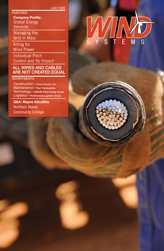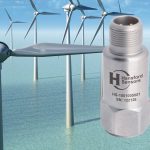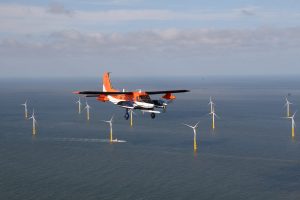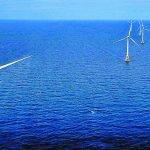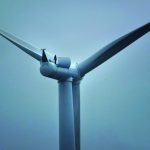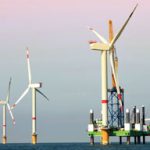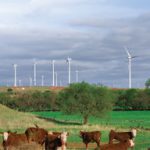It was not so long ago that control systems utilized physical indicator lights and annunciators to provide a warning system of system faults on operating equipment. Despite the advancement in technology from these time-tested control panels to high-tech computer monitoring systems, somehow they still lack the capability to remotely monitor some critical subsystems that are just as vital to turbine operation as the generator itself. In these instances it’s left to the wind technician to confirm the integrity of subcomponents, to test the lights as it were, and monitor the physical operating condition of the turbine. Examples of these subcomponents include the ladder safety system, the nacelle hoist, cable support systems, emergency lighting, and turbine weather protection. These all represent turbine subsystems that have no operational sensors, no functional alarm monitors, and can only be evaluated during an actual turbine visit.
Ladder safety is inarguably the most important aspect of working on a wind turbine. Despite what should be the most highly audited subsystem on the unit, ladder integrity issues can be commonplace. From loosened cable clips to damaged ladder rungs, all of these material issues can be resolved through a more comprehensive and active maintenance plan. Because aluminum is a malleable metal and is subject to dents and nicks, many small dents or nicks on the beams and rungs are not unusual and are not grounds to fail a ladder. However, each rung should be capable of supporting a single concentrated load of at least 250 pounds applied in the middle of the rung. When a rung has been compromised due to a large dent or severe cable rub (that will likely manifest itself in the middle section of a rung), this should be given proper consideration for replacement. With no other indicator than a visual inspection during a climb, the priority of this subsystem is obvious.
The chain or cable hoist is another installed system that is not externally monitored and can often be inadequately maintained. These systems serve to raise and lower loads from the ground to the nacelle at weights of up to a ton and at heights in excess of 325 feet. In what might be a lesser known ASME Standard B30.16 for overhead hoists, the operator should be conducting a pre-use assessment that includes inspection of the hoist components as well as a test of its safety devices, particularly the brake and overrun limit protection. The inspection should also include examination of the cable hook and of the cable or chain for gross damage, kinks, or broken strands. Missing or damaged chain stops will fail to act as a manual brake should the chain be inadvertently extended to its full length. Substantial force can be applied to the stop in the event that the chain is fully run out and can easily be twice the Safe Working Load. If the stop is not present or is severely damaged, the chain may run through with potentially disastrous consequences. In addition to pre-use inspections, the safety features of the hoist should be tested at the manufacturer’s interval or at least annually and recorded in accordance with B30.16.
Descending a wind turbine in the dark can add a whole new challenge to what is already a demanding task. Emergency lighting is installed for that one most inconvenient time when grid power is lost to the turbine and a climb must be made safely back down to ground level. Again, being an unmonitored subsystem of the turbine controls, the only way to know if the emergency lighting functions properly and will be there for them when needed is for the technician to conduct a frequent functional test. In addition to the periodic functional test, an annual performance test should be conducted in accordance with NFPA standards.
We have yet to see moisture gauges installed inside a wind turbine tower but maybe one day this might be a standard feature. Given that most turbines are installed in areas where seasonal weather can be somewhat unforgiving, protection from the elements has been passively designed into the turbine structure, yet management of weather ingress is left to the wind technician to detect and mitigate. Opening the turbine door to standing water or a flooded basement should suggest a lack of proper sealing on the turbine, and it could be from an area not so desirable such as the skylight doors. While it may be marginal to describe weather proofing as a subsystem, the results of poor weatherproofing can have a significant impact on turbine operation, particularly on electrical components that are installed down tower. This is one turbine function that certainly needs to be working.
Today’s wind turbine controls, though complex and increasing in monitoring capability, lack in an all-inclusive understanding of turbine health. The wind technician still has an important role to play in managing subsystem integrity issues that are not part of the turbine control scheme, particularly when it comes to monitoring safety systems and their proper operation.
















